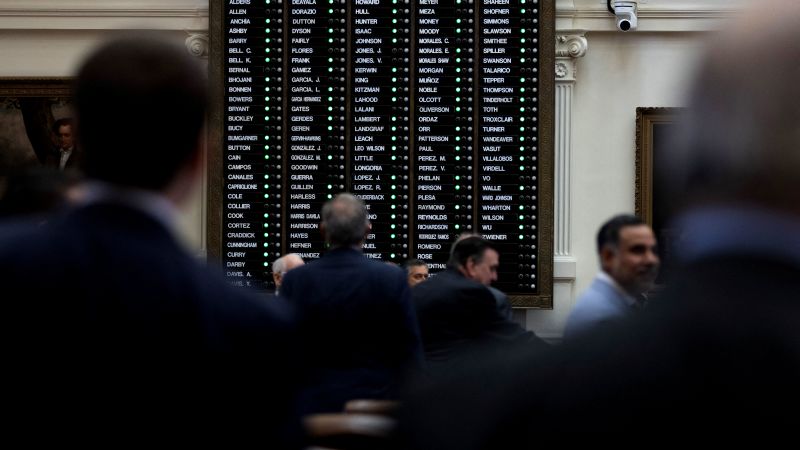In recent political developments, Texas Republicans have been given a significant opportunity to reshape the congressional landscape of the state. This comes after House Democrats concluded a 15-day walkout and returned to the Capitol. The Democrats’ absence had temporarily thwarted the GOP’s efforts to push through a contentious redistricting plan aimed at amplifying their congressional representation.
As Texas navigates its redistricting process, legislators are expected to convene to approve new maps that will add five additional Republican-leaning seats. This rapid maneuvering suggests that Republicans are eager to solidify their influence within the state’s congressional delegation. However, the timeline for completing this redistricting effort remains uncertain, and there is anticipation regarding whether this will be accomplished within the week.
The backdrop to this political maneuvering includes not just internal state politics but also a broader national context. In California, Democrats are actively working on proposals to counteract the GOP-led redistricting strategy out of Texas by proposing five new districts that heavily favor Democratic candidates. This ongoing “redistricting arms race” is emblematic of the intensified political polarization in the United States, particularly between these two populous states.
To expedite their objectives, Texas Republicans convened their House Redistricting Committee, which recently approved a new set of congressional maps following a tightly contested vote of 12-8. Given that these maps are now progressing to the Calendars Committee before the House floor for further consideration, the pressure is on to finalize these changes rapidly. Notably, Governor Greg Abbott has already initiated a second special legislative session, indicating a concerted effort by the GOP to assert control in response to Democratic actions.
The situation has escalated to the extent that House Speaker Dustin Burrows took extraordinary measures to ensure the presence of Democratic legislators. He ordered the doors of the House to be locked upon reconvening and made arrangements for law enforcement to “escort” back those Democrats who had fled to avoid voting. This maneuver highlights the lengths to which the Republican leadership is willing to go to solidify their strategic objectives.
Meanwhile, political sentiments are heating up nationally, with former President Donald Trump urging Texas Republicans to move quickly on redistricting. His call to action amplifies the stakes in the redistricting process, underscoring how these actions are viewed as crucial to maintaining Republican dominance at a national level.
Parallel to Texas’s developments, California Democrats, under the leadership of state assembly members, are confronting their own challenges in redistricting. They have introduced a range of measures designed to secure Democratic-leaning districts through 2030, symbolizing a proactive stance against perceived Republican overreach. The urgency surrounding the California Democrats’ efforts underscores the competing interests and tensions between parties, especially amid the current atmosphere of unrest and division.
During press conferences held by both parties in California, contrasting narratives emerged. Democrats characterized their initiatives as necessary responses to the overreach of Texas Republicans and a safeguard against what they perceive as authoritarian tendencies under Trump’s influence. Conversely, Republicans articulated concerns over what they called partisan gerrymandering, denouncing their opponents’ redistricting efforts while emphasizing the importance of fair and independent elections.
As the political back-and-forth continues, both legislative factions articulate their positions on the future of redistricting in a manner that reflects broader ideological divides. With the stakes this high, Texas and California not only stand as battlegrounds in the redistricting war but also symbolize the increasing partisanship that permeates American politics today. The decisions made in these states will undoubtedly resonate nationwide, influencing the political landscape heading into the next electoral cycles.











